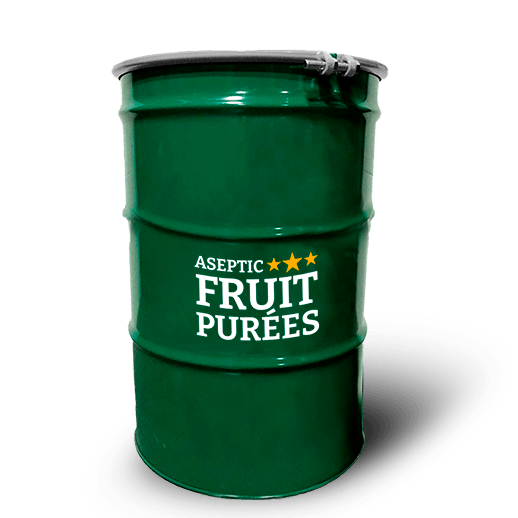Blending is exactly what is sounds like - but it is not as simple as arbitrarily mixing things together. It must be to achieve some characteristic or end goal. It is utilized within the alcohol industry for a number of reasons which vary from beverage to beverage, but we will touch on a few that are pungent. Blending can be used to adapt to the ever-changing flow of raw materials going through your operation, no matter what it is. When integrating a raw material change, because of a tradition, consistency in the product, and to achieve a very specific flavor profile.
Raw Materials: Blending to Adapt
One thing that not many people think about when it comes to production of just about any food product is the variability of raw materials. Raw materials change from season to season, year to year. For instance, every year there is hop selection for brewers to choose the hops that they want to buy for the following year. Any agricultural product, but more specifically fruit, can change year over year due to many factors such as weather or other environmental impacts. This must always be considered when formulating a recipe that might be recurring or a brand you are trying to establish or rebuild.
Gueuze: Old World Blending
Located off the Senne or Zenne River in Belgium is the only place in the world that can produce this beer and call it Lambic (how the Champagne region of France is to Champagne). This is due to the specific wild yeast in the air that creates a specific flavor profile. Similar to wine, this is referred to as “terrior”. These Belgian beers that have been made for centuries rely on blending. You could argue that this style would not exist without blending. These beers are brewed over the course of three years by blending young Lambic with older Lambic in a bottle that creates a secondary fermentation which carbonates the beer. Yeast is not actually pitched at all in the production of Gueuze. The young beer contains more fermentable sugar and are not as dry as older beer. However, when these are blended in the right proportions and left to condition for months (or even years) the result is a highly attenuated, carbonated beverage that is truly unique.
Brewing and Distilling: Modern Blending
Blending is also utilized in breweries and distilleries alike. In the brewery, batches are blended to offset small differences from batch to batch in the product. Equipment malfunctions and operator error that could affect the product is just a fact in any production environment. Blending is not only used to “cover up mistakes” but is comforting to have as an option. This is not to say that you cannot brew batches that are consistent without blending but sometimes “things happen” that must be delt with. There is a limit for this when blending is not an option and it is important to know when you have gone too far. In distilleries, batches are blended for the same reason, i.e. blended whiskey vs. single-barrel. When a distillery releases a “single-barrel” it is most likely because there was a particularly exceptional character that did not require blending. However, more to fit a specific flavor profile and to keep consistency in a particular brand. In brewing and distilling, sometimes beer and spirits are aged in oak barrels. These oak barrels are a variable themselves. Each oak barrel has had a life of its own and are each different in their own way. This variability will impart different flavors in the final product that will need to be tasted and considered in the larger picture. Even where the barrels sit on the racks and how high they are stacked will all have effects on the flavor.
Blending in Winemaking
Blending is also used in wine production. One particularly interesting example are the Super Tuscan blends from Italy. These are blends of specific grape varietals, oak barrels (just like in the brewery and distillery) and vineyard plots (where the grapes were grown). These blends are unique because they do not follow the traditional rules of winemaking. These bring in non-indigenous grapes such as Merlot, Cabernet Sauvignon, etc. to make a beautiful blend. This is again where we meet at the intersection of art and science. These wines are specifically blended to the wine makers taste with a specific profile that is desired. These do not fall into either official classification of Italian wine. DOC (Denomination of controlled origin) which means that the grapes used to make the wine came from Italy. And DOCG (Denomination of controlled origin and guarantee) which means they not only came from Italy but that the government guarantees it.
Anyone can blend
Blending does not always have to be employed just to maintain consistency or cover up mistakes. It can and should be used to reach a certain flavor profile or lend a characteristic that might be lacking. For example, in a previous article we talked about the blending of “acid beer” to really make a strawberry saison more authentic and balanced. I was under the impression early on in my brewing career that every batch had to be perfect. There is nothing wrong with nailing any recipe without blending.
However, having a few tricks up your sleeve can be advantageous just in case Murphy’s Law rears its ugly figurative head. I know that having an “acid beer” just sitting around in a tank is not practical because tank space is precious in a brewery. Having barrels sitting around does not take up tank space and can add a cool aesthetic to your brewery. If you do not have barrels in the budget, you can use a rinsed and sanitized industrial tote. Now that you’ve got the history of blending and reasons to do so, along with some examples over several facets of the beverage industry, you will be inspired to think outside the box and blend like a pro.
Nick Burgoyne is our Brewing Consultant
with more than 15 years of experience in the
craft beer industry. nick_burgoyne@yahoo.com






